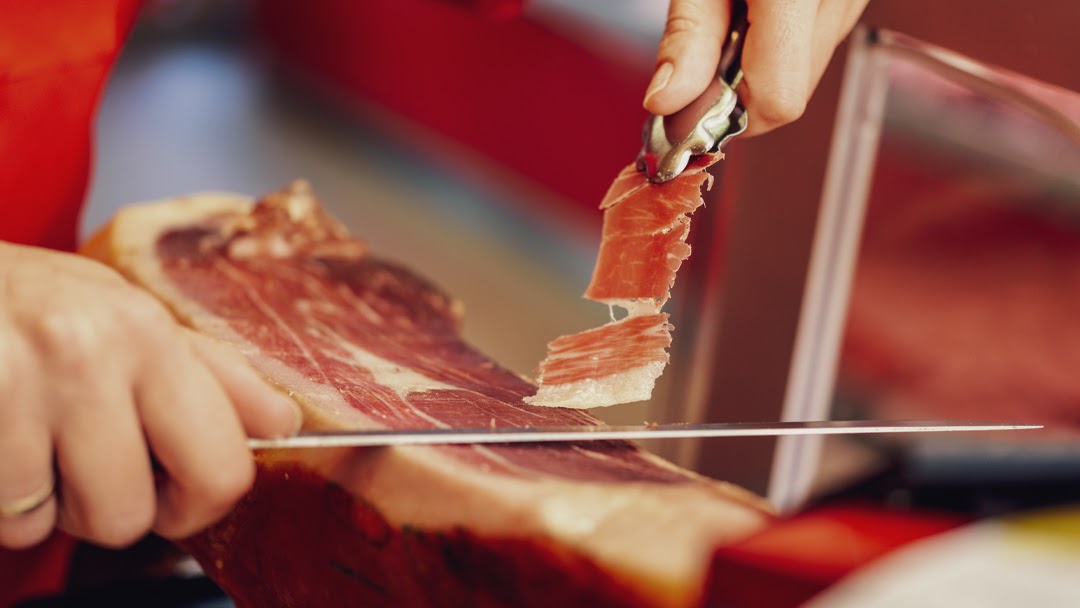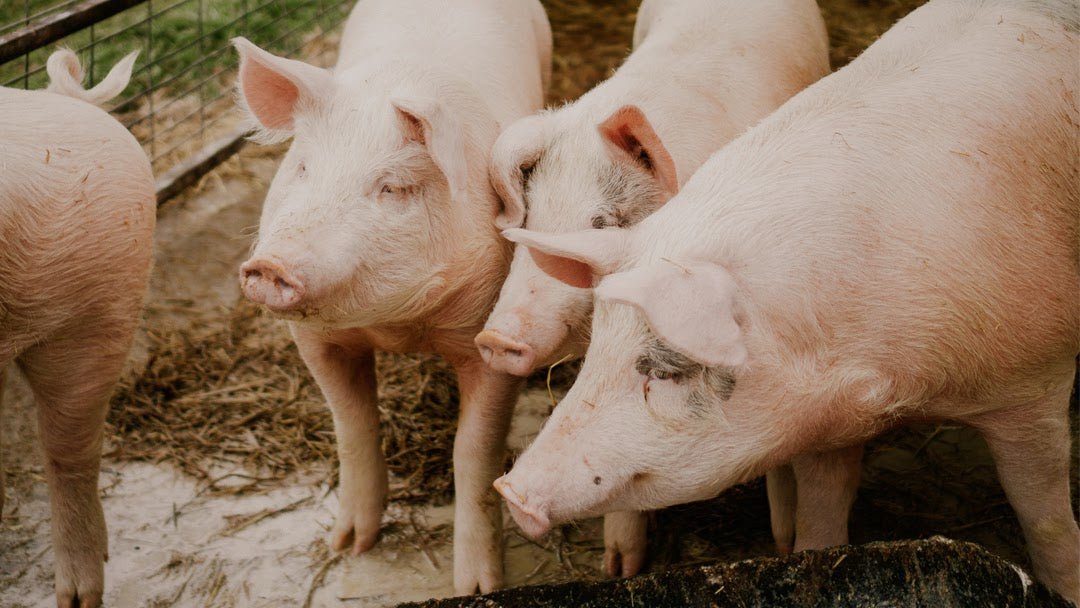Although we usually think that Serrano ham is a “second division” type of ham, this is not the case. In fact, it is the most common in our daily gastronomy, due to its quality at a more economical price. There are top quality serrano hams and we are going to learn what they are. From Enrique Tomás, we have named this Serrano ham, top in quality, as the “Gran reserva”.
Particularities of Jamón serrano
When we talk about serrano ham, we are referring to the hind leg of a white pig, anyone that does not come from the Iberian breed. We can find this type of pigs anywhere on the planet. Those who are dedicated to the production of ham are subjected to adequate nutrition so that the final result is as delicious as possible. This diet is usually based on feed and cereals.
Although this type of ham can be found all over the world, as we have said, depending on the breed of white pig that comes from and the treatment and curing time given, we can identify different flavors, qualities or characteristics that are the that differentiate the ham of each region or country.
In Spain we talk about serrano ham, but for example in Italy they talk about “Prosciutto”, in Portugal about Presunto or in France about “Jambon”. And it is clear that each of them has its own characteristics in terms of flavor, appearance and quality.
Spanish Jamón serrano
Within the regions of Spain we can also find different qualities of serrano ham. And the majority of the ham producing market to produce this type does so from breeds such as “Duroc, Pietrain or Large White”, and with a curing time of around twelve months.
Why at Enrique Tomás is the jamón serrano is called jamón reserva?
Iberian ham is a product that is obtained from Iberian pigs and serrano ham is that which comes from white pigs. Both hams are obtained from the animal's hind legs, but the Iberian, unlike the Serrano, can only be produced in Spain and Portugal for two reasons; Firstly, Iberian pigs are only found in our peninsula and, secondly, only in these countries do the necessary weather conditions exist for Iberian ham to be produced as it should.
Another difference would be the curing, what we call “cooking” the ham . This preparation in salt requires a specific time. In Serrano ham it is usually twelve months, although in Enrique Tomás it is eighteen, and in Iberian ham it is between thirty-six and forty-eight months, depending on the weight of the ham. the piece.
In terms of flavor , Iberians have a genetic peculiarity that no other animal on Earth has, they infiltrate fat into the muscle and this, together with a certain diet and the exercise that the pig can do in the pasture when it is In freedom, it gives rise to a very juicy meat full of nuances and aromas. Serrano ham can come from various types of white pig breed, including Landrace, Large white, Pietrain and sometimes Duroc, however the latter, as it has the ability to infiltrate fat into the muscle like the Iberian pig, farmers use it. They usually cross with the Iberian pig for the production of Iberian ham.
Difference between jamón serrano and jamón ibérico
Iberian ham is a product that is obtained from Iberian pigs and serrano ham is that which comes from white pigs. Both hams are obtained from the animal's hind legs, but the Iberian, unlike the Serrano, can only be produced in Spain and Portugal for two reasons; Firstly, Iberian pigs are only found in our peninsula and, secondly, only in these countries do the necessary weather conditions exist for Iberian ham to be produced as it should.
Another difference would be the curing, what we call “cooking” the ham . This preparation in salt requires a specific time. In Serrano ham it is usually twelve months, although in Enrique Tomás it is eighteen, and in Iberian ham it is between thirty-six and forty-eight months, depending on the weight of the ham. the piece.
In terms of flavor , Iberians have a genetic peculiarity that no other animal on Earth has, they infiltrate fat into the muscle and this, together with a certain diet and the exercise that the pig can do in the pasture when it is In freedom, it gives rise to a very juicy meat full of nuances and aromas. Serrano ham can come from various types of white pig breed, including Landrace, Large white, Pietrain and sometimes Duroc, however the latter, as it has the ability to infiltrate fat into the muscle like the Iberian pig, farmers use it. They usually cross with the Iberian pig for the production of Iberian ham.
IS JAMÓN SERRANO ONLY FOUND IN SPAIN?
Serrano ham is what we call it in Spain, however, this type of ham is found all over the world, although it varies in quality, appearance or flavor depending on the region or country.
WHAT IS THE MAIN DIFFERENCE BETWEEN JAMÓN SERRANO AND JAMÓN IBÉRICO?
The main difference is found in the breed, Serrano ham comes from white or non-Iberian pigs while Iberian ham comes from the Iberian breed, unique and typical of the Iberian Peninsula.
WHAT IS THE DIFFERENCE IN FLAVOR BETWEEN JAMÓN SERRANO AND JAMÓN IBÉRICO?
Iberians have a genetic peculiarity that no other animal on Earth has, they infiltrate fat into the muscle and this, together with a certain diet and their time in freedom in the pasture, gives rise to an exceptional flavor.
WHY BUY ENRIQUE TOMÁS JAMÓN GRAN RESERVA?
Because it is a selected ham following very exhaustive quality controls. In the curing process we keep enough fat so that the ham can be cured for 18 months, exceeding the curing time of the rest of Serrano hams on the market. For Enrique Tomás, the care and pampering process is the same in all his hams, whether Iberian or non-Iberian, so that the result is a tasty ham of exceptional quality and one of the best on the market.





